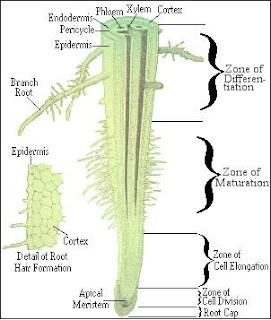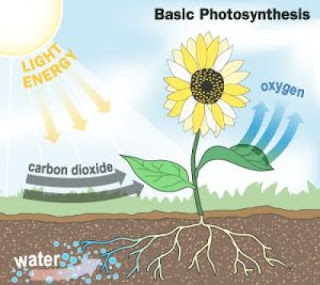Kemampuan menghasilkan biji untuk regenerasi telah berkembang sejak masa gymnosperma kuno sekitar 300 juta tahun yang lalu. Tumbuhan berbiji memiliki kelebihan dibandingkan dengan tumbuhan bersepora yang primitive, dimana calon lembaganya ditutupi oleh lapisan pelindung dan dilengkapi dengan cadangan makanan yang akan digunakan pada saat perumbuhan awal anak muda. Perkembangan angiosperma (Sekitar 100 juta tahun yang lalu) yang memiliki pelindung tambahan pada perkembangan embrio, lebih menjamin keberhasilan tumbuhan berbiji sebagai pembentuk kelompok utama pada lingkungannya (Bold et All1980). Namun demikian jumlah tumbuhan bersepora seperti jenis paku-pakuan dan lumut masih sangat besar, meskipun memiliki ukuran fisik yang relative kecil. Selain pohon paku-pakuan, yang memiliki peran sangat kecil dalam bidang kehutanan, semua tumbuhan kehutanan, semua tumbuhan hutan adalah tumbuhan berbiji.
Peran utama benih adalah melindungi embrio yang akan tumbuh pada satu lingkungan yang baru dan menyediakan bahan makanan bagi embrio selama masa perkecambanhan dan pemapanan. Karena tumbuhan berbiji tumbuh pada kondisi lingkungan yang sangat beragam dan berinteraksi dengan organisme hidup lainnya, maka selama lebih dari 1000 tahun yang mengalami proses evolusi menjadi banyak jenis dan dengan bentuk biji yang beragam. Mulai dari benih anggrek dan Eucalyptus yang sangat kecil dengan hitungan gram sampai pada jenis kelapa raksasa (Lodoicea maldivica) dengan berat beberapa kilogram; dari yang lunak, benih lembutseperti pada jenis-jenis mangrove yang mirip bahan vegetatif sampai dengan benih yang sangat keras seperti pada beberapa jenis Loguminosae yang tahan terhadap kekeringan, api dan tekanan mekanis serta dapat tetap hidup selama berabad-abad.
Istilah biji berlaku pada suatu oval yang telah membesar dan berkembang, biasanya setelah mengalami perubahan. Penanganan benih dimulai pada saat benih atau buah diambil dari pohon atau dikumpulkan diatas tanah, pada saat benih tersebut telah atau hamper masak, namun banyak pengumpulan benih tersebut telah atau hamper masak. Naun, banyak pengumpulan benih dilakukan sebelum benih masak yang akan berpengaruh terhadap produksi, kualitas dan penanganan benih.
Selanjutnya, beberapa tipe benih memiliki toleransi yang tinggi terhadap lingkungan dimana benih tersebut tumbuh, dan biasanya penanganannya tidak sulit. Beberapa tipe benih lainnya telah beradaptasi terhadap lingkungan tertentu, sehingga rentan terhadap perubahan-perubahan fisik dalam penanganan, mulai dari pengumpulan sampai dengan penaburan.
Dengan jenis-jenis dengan masa berbuah yang tidak menentu, benih yang sangat rentan terhadap pemangsa, mudah busuk, sulit diekstraksi, berkecambanh selama masa penyimpanan atau berbagai kesulitan lain dalam penanganannya, diperlukan pemahaman mengenai hal-hal yang berkaitan dengan faktortersebut. Beberapa masalah praktis dalam penanganan benih, sangat mudah dipecahkan apabila diketahui bahwa benih merupakan unit regenerasi yang mengalami proses evolusi sebagai respons terhadap lingkungan.
KNOW BIOLOGY, DEVELOPMENT AND ECOLOGY SEED
The ability to produce seed for regeneration has evolved since the days of ancient gymnosperms about 300 million years ago. Plant seeds has advantages compared with the primitive bersepora plant, where the candidate institution is covered by a protective coating and comes with a reserve of food which will be used at the time of initial change young children. The development of angiosperms (About 100 million years ago) who have more protection in embryonic development, better ensure the success of seed plants as forming the main group on the environment (Bold et All1980). However, the number of plant species bersepora like ferns and mosses are still very large, despite its relatively small physical size. In addition to tree ferns, which has a very small role in the field of forestry, all forestry plants, all forest plants are seed plants.
The primary role is to protect the seed embryo that would grow in a new environment and provide food for the embryo during the germination. Because the seed plants growing on a wide range of environmental conditions and interact with other living organisms, so for more than 1000 years old who experienced the process of evolution into many types and with varying forms of seed. Starting from seed orchid and Eucalyptus are very small with a count of gram to the giant coconut type (Lodoicea maldivica) weighing several kilograms, from the soft, seed such soft on mangrove species that are similar vegetative material until the seed is very hard as in some Loguminosae types that are resistant to drought, fire and mechanical pressure and can stay alive for centuries.
The term applies to an oval seeds that have been enlarged and developed, usually after experiencing a change. Seed handling begins when the seed or fruit taken from trees or gathered on the ground, when the seeds are already or nearly ripe, but a lot of seed collection have been or nearly ripe. But, many seed collection carried out before the ripe seeds that will affect the production, quality and handling of seed.
Furthermore, some types of seeds have a high tolerance to the environment in which those seeds grow, and usually not difficult to handle. Some other seed types have been adapted to specific environments, so vulnerable to physical changes in the handling, from collection to dissemination.
Furthermore, some types of seeds have a high tolerance to the environment in which those seeds grow, and usually not difficult to handle. Some other seed types have been adapted to specific environments, so vulnerable to physical changes in the handling, from collection to dissemination.
With the types of the fruiting period of uncertainty, the seeds are very vulnerable to predators, perishable, difficult extraction, germinate during storage or other difficulties in handling, it takes understanding on matters relating to these factors. Some practical problems in the handling of seed, is very easily solved if it is known that the seed is a regeneration unit that experienced the process of evolution in response to the environment.




Comments
Post a Comment
Isi Komentar kamu untuk Posting ini!!